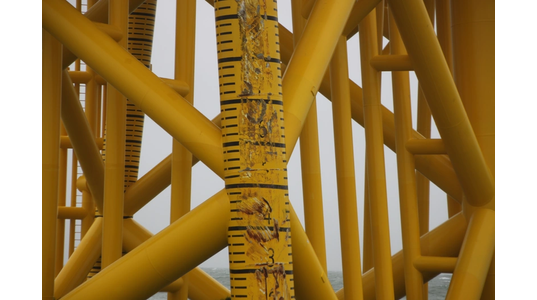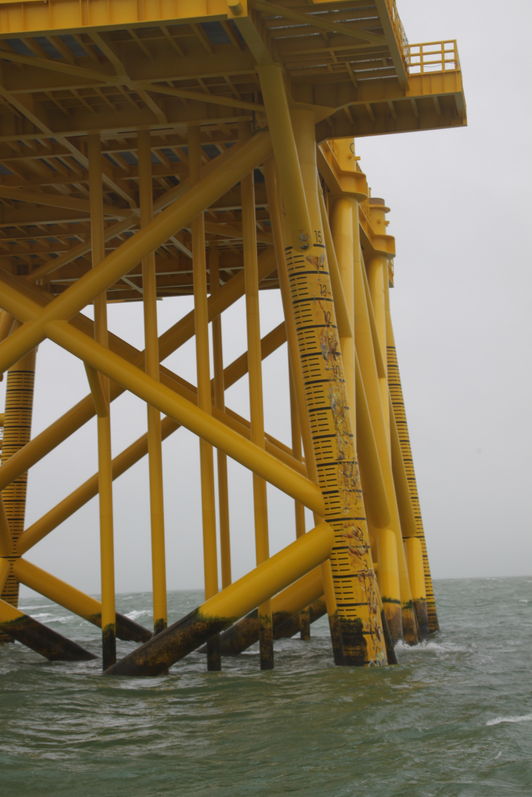
TenneT's investigation has shown that there is no major damage to the HKZ Beta jacket in the Dutch North Sea which was hit by a drifting bulk carrier in a storm in January.
This means that the 3,950t topside can be installed on the jacket as planned, forming part of the Hollandse Kust Zuid (HKZ) grid connection that connects the offshore wind farm zone to the Dutch mainland at the Maasvlakte. The wind farm is being built by Vattenfall.
The incident
On Monday, January 31, the freighter Julietta D. went adrift due to storm Corrie in the area where TenneT is building two transformer platforms (Hollandse Kust (zuid) Alpha and Beta). These transformer platforms are part of the offshore connection of wind farm Hollandse Kust (zuid). The cargo ship hit the Beta jacket. No people were working on the platform at that moment.
Limited damage
In a statement on Thursday, Tennet said: "TenneT has had investigations carried out on the jacket (substructure) that was damaged in January during storm Corrie by a collision with the adrift vessel Julietta D. The investigation shows that the damage to the jacket is limited. The damaged parts of the jacket can be repaired at a later stage after topside installation. TenneT expects the Hollandse Kust (zuid) Beta topside to be installed at the end of March or early April.
A few dents
Tennet said that the persistent stormy weather in February meant that inspections of the damage could not be carried out immediately. In addition to the inspection of visible damage above water, underwater investigations were also carried out to determine any damage to the substructure.
"This underwater investigation took more time due to relatively high waves and poor visibility. The investigation now shows that the damage is limited to paint damage and a few dents on one of the legs of the platform and damage to one of the four landing platforms for working vessels," TenneT said.
Safe installation
Joris Engelen, TenneT's Platform Project Lead: "When designing and building our jackets, scenarios are taken into account that a ship of limited size may collide with the jacket. After the initial fright of the collision, we set up and implemented an extensive investigation plan in cooperation with the parties involved. The jacket is expected to be in operation for many years.
"We are therefore relieved that the inspections and the investigations show that we can install the top side of the transformer platform on the jacket safely and as scheduled. After the top side has been installed, the repairs of the damages on the jacket can be carried out."
The HKZ Beta topside last which last month set sail from Dubai aboard Boskalis' Mighty Servant 3 vessel. According to MarineTraffic, the Mighty Servant 3 has reached the Netherlands and is currently anchored offshore Rotterdam.
"TenneT expects that the topside can be installed at the end of March or the beginning of April," the grid operator said Thursday.
Testing barriers
The incident with the Julietta D hitting the HKZ jacket prompted a research by the Dutch maritime research institute MARIN, with other industry partners. into the potential barriers aimed at averting collisions between ships and wind turbines.
"A collision with an installed wind turbine carries a real risk of the turbine toppling onto the vessel, seriously endangering crew, passengers, the ship itself and the environment," MARIN said last week, announcing that three innovative concepts were tested.
The first concept involves a string of surface buoys secured by drag anchors. The second concept comprises a smart suspension net between fixed poles and the third is an anchored underwater hook line designed to catch the anchor of the drifting vessel. MARIN built scale models of all three solutions and ran tests in its Offshore Basin on 17 and 18 March to see if the barriers were capable of deflecting a scale model comparable to the Julietta D in storm conditions.
"The first results are promising," MARIN said. Read More Here.



